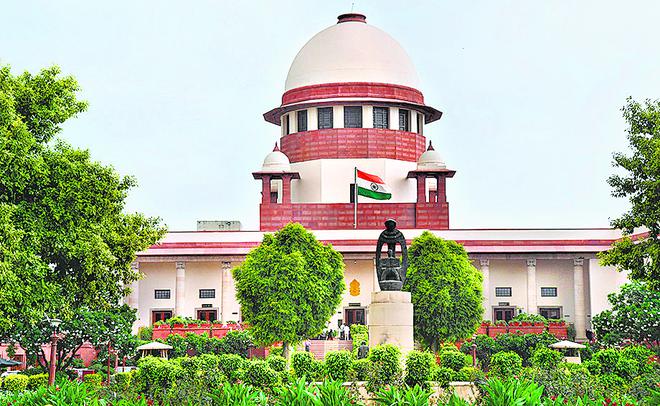In 2022, the retirements of the highest-ranking members of the judiciary will result in changes to the influential Supreme Court Collegium, as well as the appointment of two new Chief Justices in a matter of months.
The retirements, however, come at a time when the court is attempting to regain its footing following particularly devastating epidemic waves. Even while the virus refuses to go away, the court continues to struggle with the issue of pendency.
70362 cases are pending with Supreme Court
According to the Supreme Court’s statistics, there are 70,362 cases pending with it as of April 1, 2022, albeit over 19% of them are not ready for judicial hearing since they have not completed the needed preliminaries. There are 52,110 admission cases and 18,522 regular hearing cases. There are a total of 422 Constitution Bench cases (including main and related topics).
A whirlwind of activity
N.V. Ramana, the Chief Justice of India, has been overheard in open court discussing with lawyers the difficulties of listing every case early. After two years of using a virtual system, the Supreme Court has only lately resumed full physical sessions. The court is juggling Benches, with justices sitting on Special Benches in various combinations to expedite the hearing and disposition of pending matters, including death sentence cases. A bustle of activity is taking place on the court. Seven looming retirements in seven months could stifle the recovery at a critical juncture. This is compounded by the fact that there are already two openings. The sanctioned judicial strength is 34, however, the working judicial strength is 32.
The series of monthly retirements would begin the month the court goes on vacation for the summer.
On May 10, Justice Vineet Saran will step down, followed by Justices L. Nageswara Rao and A.M. Khanwilkar on June 7 and July 29, respectively. On August 26, Chief Justice Ramana would step down. On September 23, Justice Indira Banerjee will step down, lowering the number of women judges from four to three, and Justice Hemant Gupta will step down on October 16.
After Justice Ramana’s retirement, Justice Lalit, who is projected to be appointed Chief Justice based on seniority, would retire on November 8. Justice D.Y. Chandrachud, the sole constant amid the months of change and the collegium’s number four, is set to succeed Justice Lalit as CJI for a complete two-year tenure till November 10, 2024.
No fresh appointment in Supreme court
If no fresh appointments are announced before Justice Lalit’s retirement on November 8, the court could have nine vacancies this year.
In the latter months of an incumbent Chief Justice’s term, no fresh nominations are usually made. Justice Lalit, Justice Ramana’s successor, has been a top judge for just over two months. So, either Chief Justice Ramana’s particularly successful Collegium, which scripted the potential appointment of India’s first woman Chief Justice in Justice B.V. Nagarathna, has to fill vacancies as they arise, or Justice Lalit will have to act quickly, or the Supreme court will have to wait until Justice Chandrachud settles in with his new Collegium.
In the course of the year, Justices Sanjay Kishan Kaul, S. Abdul Nazeer, and, first, Indira Banerjee, and following her retirement, Justice K.M. Joseph, will join the Collegium. M.R. Shah, the Chief Justice, would also accompany them into the Collegium.
On December 25, 2023, Justice Kaul will step down. Justice Nazeer will serve on the influential panel of justices until January 4 of the next year. Justice Joseph will remain in the collegium until June 16, 2023, when he will retire. On May 15, 2023, Justice Shah will step down.

